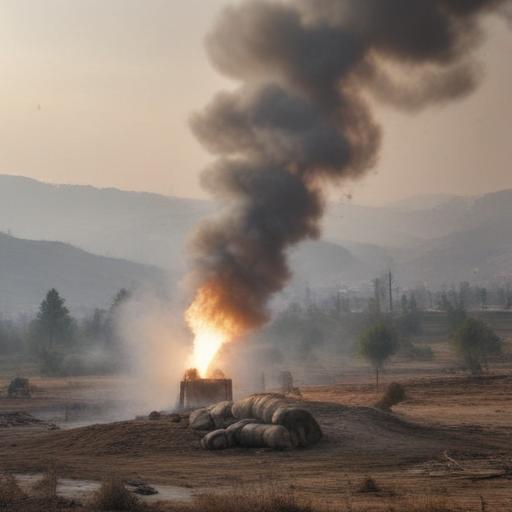In a recent escalation along the Line of Control, Havildar Mohd Khan, a former Army commando, experienced significant damage to his home in Uri, Jammu and Kashmir’s Baramulla district. This incident took place early Wednesday during an artillery barrage by the Pakistani Army that resulted in the tragic loss of three civilian lives and several injuries.
Havildar Khan recounted the terrifying events, stating that the firing began around 1 AM, initially sounding sporadic but intensifying by 2:30 AM with heavy artillery shelling. As his home began to shake from the blasts, Khan immediately took his wife and children to safety. He instructed them to lie flat on the ground to avoid flying debris, emphasizing the shock and chaos of the situation.
This artillery fire was reportedly a direct retaliation by the Pakistani Army following India’s Operation Sindoor, a strategic military operation that targeted nine terrorist bases and training camps in Pakistan and Pakistan-occupied Kashmir. This response was in light of a previous terrorist attack claimed by the Lashkar-e-Taiba in Pahalgam, which resulted in 26 civilian deaths.
According to military sources, the operation resulted in the deaths of approximately 70 terrorists and injuries to around 60 others, aiming to dismantle camps associated with groups like the Lashkar, Jaish-e-Mohammed, and Hizbul Mujahideen. The Indian military emphasizes that the operation was conducted based on credible intelligence and strategically timed to minimize civilian presence.
The situation has drawn attention to the ongoing conflict in the region, highlighting the dangers faced by civilians living near the volatile border. While the attacks underscore the ongoing tensions between India and Pakistan, they also reflect the complexities of ensuring security while protecting innocent lives.
Khan’s account reveals the immediate human cost of these military actions, adding a personal dimension to the broader regional conflict. Despite the challenges, the Indian military’s focus on precision strikes aims to limit collateral damage as much as possible.
This latest incident serves as a somber reminder of the fragile peace in the region and the urgent need for conflict resolution. The hope for a safer future remains, as numerous voices advocate for dialogue and understanding in pursuit of lasting peace.
